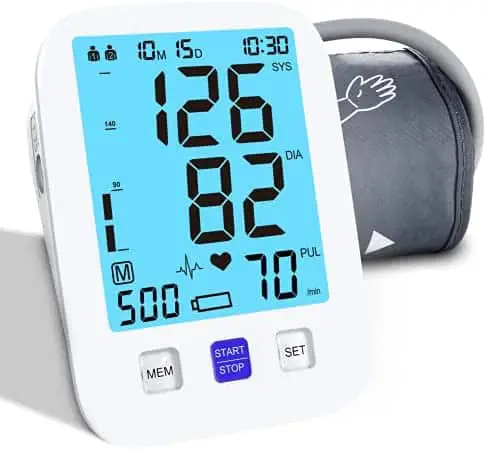An empty courtroom is seen at the New York State Supreme Court in Manhattan, New York City, U.S., August 21, 2020. REUTERS/Andrew Kelly
Register now for FREE unlimited access to Reuters.com
Digital evidence, in all its forms, is a somewhat new development for law enforcement investigations, and more and more court cases are relying on it.
Criminal prosecutors have always faced arduous tasks and mounting cases loads in the pursuit of justice. As a former deputy district attorney, I recall some of those challenges quite clearly, including how to build a case that ensures justice is served for allparties.
One of the most important duties of a prosecutor is the legal requirement to turn over exculpatory evidence, meaning evidence that could prove innocence, reduce a sentence, or otherwise cast doubt on the guilt of a criminal suspect.
Register now for FREE unlimited access to Reuters.com
Prosecutors continue to face technology issues related to evidence, particularly when digital evidence is involved. This was true when I was a prosecutor, and it continues to be an important topic now, in 2022.
“The biggest thing prosecutors were facing pre-COVID and continue to face today is the ability to get access to evidence,” says Mahesh Rengaswamy, Senior Director of Digital Courts Strategy at Thomson Reuters. “Prosecutors need a consistent way to get access to the information they need to do their work in a timely manner.”
Video evidence, body cameras & more
I recall the days when a police report would show up on my desk, and I noticed that there was video evidence of the alleged crime. I often approached those moments with some trepidation. Did the officer bring me a DVD copy of the video? Will the video play on my computer? Even if it does, will the video clearly show what the officer was alleging in the report? And if the video isn’t playable, will we have to drop an otherwise provable case?
Digital evidence is a relatively new phenomenon for law enforcement investigations. And yet more cases are relying on it, and this includes such digital evidence as: video footage of a crime scene from closed-circuit television (CCTV); video footage from a civilian’s cell phone or their own security cameras such as Ring or Nest; footage from an officer’s body camera; data or information on personal computers or on portable electronic devices such as smartphones; and the list goes on. Simply put, the amount of data prosecutors are dealing with has exploded.
One main issue underlying digital evidence is admissibility in court. Is there a proper chain of custody showing how physical or electronic evidence in criminal and civil investigations has been handled? This typically means a chronological paper trail documenting when, how, and by whom individual items of physical or electronic evidence were collected, handled, analyzed, or otherwise controlled during an investigation.
Digital evidence clearinghouse
A cloud-based digital evidence clearinghouse in which evidence is collected, uploaded, and stored into a central repository — while providing a digital paper trail — is one avenue that experts are considering. Law enforcement agencies could funnel the evidence into one system and have it tagged and organized for ease of use and sharing, says Rengaswamy. This could be anything from still photos of a license plate to actual video footage of an attempted convenience store robbery. “There would be no hunting or making phone calls to 15 different people to authenticate the piece of evidence,” says Rengaswamy.
This digital evidence clearinghouse would be a central place where all the information is consolidated across multiple law enforcement agencies. It would solve a workflow challenge that currently has prosecutors typically dealing with multiple agencies at a time, whether city, county, or federal government law enforcement, all of whom may all use different systems for evidence collection and submission to the prosecutor. In a cloud-based environment, this would change to one solution, one place.
Inefficiency in the exchange of data
One thing both law enforcement officers and prosecutors could use more of is time. Dealing with digital evidentiary issues often requires the transfer of large amounts of data, and this takes time. In footage from an officer’s body camera, for example, there is the time to record the footage, retrieve it from the officer’s device and then transfer it to the police agency’s server. Then the evidence will go from the server to the prosecutor, who hopefully can access it when the police report arrives on the prosecutor’s desk. Finally, a prosecutor also has to ensure that a copy is made for the defendant and the defense attorney.
Rengaswamy suggests that if an officer had access to a digital, cloud-based solution, the camera footage would simply be upload instantaneously when the officer connects to the server, either back in the police car or back at that station. The power to immediately push the information to a cloud server to which everyone has access eliminates many accessibility challenges.
“Gone are the days of coding and integration to move bits of data from law enforcement to the prosecution,” notes Rengaswamy. “Cloud technologies eliminate all of that. There is one copy of the digital file for everyone to use. That’s the ultimate goal.”
Proprietary video footage
Having one place to upload, store, and access digital evidence is a great idea, but what about civilians or others who are using older CCTV cameras with proprietary video systems that only play on their DVD players or on some other format?
Rengaswamy explains that this shouldn’t be a problem since it is often the same codec or underlying technology, in most cases an .mp3 or .mp4 file. “Today there are software tools that can essentially decode the proprietary data and make it playable on a simple web browser,” he adds.
Indeed, we’ve come a long way from the days when the police officer needed to take the whole hard drive back to the prosecutor’s office to play the video, or burn a DVD and play it on a specific player that only played those specific video formats.
“In the search for truth, justice, and transparency, everyone should be singing from the same sheet of digital (evidence) music,” Rengaswamy says. “Everyone can be given access to the same information, and that leads to ensuring access to justice.”
Register now for FREE unlimited access to Reuters.com
Opinions expressed are those of the author. They do not reflect the views of Reuters News, which, under the Trust Principles, is committed to integrity, independence, and freedom from bias. Thomson Reuters Institute is owned by Thomson Reuters and operates independently of Reuters News.
Gina Jurva, Esq., is Manager of the Corporates and Government enterprise content platform for Thomson Reuters. Gina works on solutions to some of the world’s most pressing fraud issues including anti-money laundering (AML), e-commerce fraud, and healthcare fraud, in addition to risk and regulatory compliance.
In a previous role at Thomson Reuters, Gina worked as a Senior Legal Writer and Editor. Additionally, she spent a combined 11 years as a deputy district attorney handling both misdemeanor and felony cases and later, her own legal practice defending clients in criminal matters.
Gina graduated from Santa Clara University with a BA in English and a minor in Medieval and Renaissance Studies. She later obtained her law degree with dual specialization certificates in criminal law and litigation. She recently graduated from the Women’s Campaign School at Yale University.


